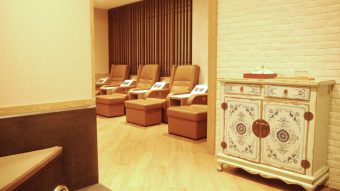
Embrace sales tech you have before investing in more
[vc_row][vc_column][vc_column_text]Rather than continue the constant pursuit of the latest bells and whistles, hotel sales departments first should undertake a thorough assessment of their current technology and how it is being used.
With any sales training for industry clients, I often conduct a pre-training sales process assessment to better customise the training experience. I get to peek into the sales operations of a diversity of sales staff with a wide range of experience levels to see how salespeople do at responding promptly, personalizing the correspondence and following up tenaciously.
These days, nearly every client hotel has invested heavily in technology for tracking leads such as Delphi, Salesforce, Opera Sales & Catering or one of the other systems (collectively referred to as “sales CRMs”). An increasing number are using electronic proposal systems that package all the details into a cloud-based document available at the click of one link, such as Cendyn’s eProposal and Blue Buzzard/Proposal Path.
From what I see first-hand, most hotels seem to be always in search of the latest proverbial “bells and whistles” that will help them outsell the competition. However, based on my experiences they would be better served by first embracing and fully actualising the potential of the systems they already have in place. Here are some examples:
Sales lead tracking/CRM systems
When it comes to the use of systems such as Delphi, too many salespeople are essentially only using this for inventory management. They only enter group room nights and meeting space when contracts are out for strong tentatives. If an inquiry comes in for dates that are already sold, they do not enter it at all. Instead, they should;
- Enter all “right-sized” leads even if they are declined immediately, for revenue-management and demand tracking purposes.
Similarly, too many are not using their systems to trace prospects for the next steps. Instead, they use a mixed bag of inefficient methods for tracking their initial leads including;
- printing out hard copies of the original inquiry, putting them in a stack on their desk or a folder marked “leads,” then making notes from phone calls and email exchanges on the hard copy;
- trying to make Outlook into a CRM by “flagging” emails, by setting calendar tasks or appointments;
- working with Excel lead sheets; and/or
- using post-it notes or manual log systems.
Instead, each right-sized lead should be entered and immediately traced for the next step. Phone calls should be summarised briefly as an “activity” attached to the contact’s record. Ideally, the emails that are sent and received should be attached to the contact record.
Depending on which version of the CRM is being used, this might be easy or hard to do. If emails cannot be easily linked, then notes from the email exchange should be entered. Some sales managers even copy and paste all important email exchanges into the record.
If messages are exchanged on platforms such as CVENT, CVB portals or via apps such as Wedding Wire or The Knot, the details of the exchange should be summarised and noted. Next steps should be traced on the salesperson’s task list until the business is won or lost. If the business is lost, it can then be re-traced for a follow-up next time.
When business turns definite, Delphi creates automatic tasks that appear on the salesperson’s daily activity list, and most salespeople seem to leave them there and just ignore them. This creates a cluttered task list and makes it hard to identify true priorities. Instead, sales managers should be deleting unnecessary auto-traces.
Outlook and email servers
Besides sales CRMs, most hotel salespeople seem to be using Outlook, and many are not using it very well. One of the first things I check is a sales person’s inbox and folder system. I often see 20,000+ emails. Seems that most sales managers prefer to leave all messages in their inbox and try to use a flagging system to identify those that are still being worked.
The challenge is that many emails require multiple action steps and some of these can get overlooked once the message is marked read. Also, with sales managers reading emails on multiple devices it is way too easy to accidentally mark a message as read and then have it be completely overlooked as it drops down in the inbox.
I find that the top-producing sales managers tend to be obsessed with having a clean email inbox. They file incoming messages that have been fully acted upon in folders organised by either by market segment or key account.
Another opportunity for improvement is to change the subject line when the topic of discussion changes drastically in the email exchange, making it easier for both the sender and receiver to later find messages about specific topics when they later search.
Cloud-based proposal display systems
A third example of underused hotel sales technology is cloud-based proposal display systems. For those unfamiliar, these systems solve the problem whereby sent emails have so many documents attached that the receiver does not open them all, especially if they are reading the email on a mobile device. Systems like eProposal and Proposal Path allow the receiver to click on one link and to see all of the information in an organised fashion.
In the set-up phase, the system administrators typically upload a plethora of images, links to outside resources (recreation, area attractions, transportation, etc.) and loads of other hotel and area information. Most of these systems make it easy for the salesperson to customise the images (and external links) by deleting those that do not match their situation and group profile. However, instead, I find that too many salespeople leave all of the images and links in place, causing information overload and also causing the most relevant details to be lost.
What’s more, most of these systems make it easy for the salesperson to upload a personal video message or authentic camera phone photos. However, I almost never see these features being used. If there is a video uploaded, it is usually a slick professional one provided by an outside production company. Instead, to stand out from the competition, salespeople should be recording personalised video messages in a more organic, authentic and conversational style.
In summary, technology has advanced so quickly and yet the industry’s best practices for hotel sales are still stuck in the 1990s. Most sales training is still focusing on basics which, while still important, fail to address how to best use the technology already in place. Meanwhile, the vendor partners want to keep selling new and exciting advanced features. Instead, I recommend that you pause and take a deep dive into how your organisation is using what you already have before you invest further.[/vc_column_text][/vc_column][/vc_row][vc_row][vc_column width=”1/2″][vc_column_text]Doug Kennedy is the President of the Kennedy Training Network, Inc. – a leading provider of hotel sales, guest service, reservations, and front desk training programmes and telephone mystery shopping services for the lodging and hospitality industry. The opinions expressed in this column do not necessarily reflect the opinions of Hotelier Maldives and its affiliated companies. Please feel free to comment or contact an editor with any questions or concerns.[/vc_column_text][/vc_column][vc_column width=”1/2″][vc_single_image image=”14690″ img_size=”full”][/vc_column][/vc_row][vc_row][vc_column][vc_column_text]This article first appeared on hotelnewsnow.com. [/vc_column_text][/vc_column][/vc_row]






